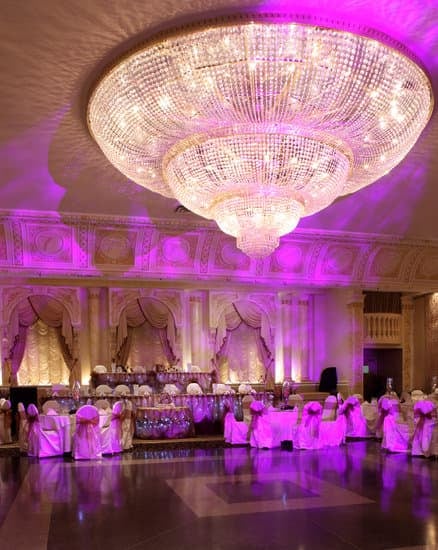Have you ever wondered, does wedding ring go before engagement? The significance of both wedding rings and engagement rings in the context of marriage and commitment is profound. Understanding the proper order of wearing these rings is essential for couples embarking on their journey together. From the history of these cherished symbols to the etiquette surrounding their placement, this article will provide insight into the traditions and meanings behind wedding and engagement rings.
The tradition of exchanging rings during a marriage proposal dates back centuries, with engagement rings holding a special place in the hearts of couples around the world. Delving into the history and evolution of engagement rings, including their traditional significance and how they came to be associated with marriage proposals, offers a deeper understanding of their role in relationships.
Similarly, wedding rings have deep-rooted symbolism in different cultures and time periods. Exploring the origins of wedding rings and their representation of eternal love provides an appreciation for this enduring tradition. By clarifying the proper etiquette and tradition surrounding the placement of engagement and wedding rings on the finger, couples can embrace these customs with knowledge and respect.
History of Engagement Rings
The tradition of giving an engagement ring as a symbol of commitment and love dates back to ancient times. One of the earliest recorded instances of an engagement ring being used in a marriage proposal is attributed to the ancient Egyptians, who were known to exchange rings made from reeds and other plants. These early engagement rings were not made from precious metals or gemstones like we see today, but they held deep symbolic meaning nonetheless.
Evolution of Engagement Rings
As time went on, the use of engagement rings became more widespread, with different cultures developing their own traditions and customs surrounding these symbols. In ancient Rome, for example, betrothal rings were often made from iron to signify strength and permanence. It wasn’t until much later, during the medieval period, that diamond engagement rings began to gain popularity among European nobility.
Traditional Significance
The traditional significance of the engagement ring has always been closely tied to the act of proposing marriage. The presentation of a ring was seen as a formal declaration of intent to marry, and the acceptance of the ring signified the recipient’s agreement to enter into matrimony. Through the centuries, this tradition has remained largely unchanged, with modern couples continuing to exchange engagement rings as a precursor to their wedding bands.
Understanding the history and evolution of engagement rings can provide valuable insight into their significance within the context of marriage proposals and commitments. By acknowledging these historical roots, couples can better appreciate the tradition behind wearing an engagement ring before receiving a wedding band.
History of Wedding Rings
Wedding rings hold a deep significance in the institution of marriage, symbolizing the eternal commitment and love between two individuals. The history of wedding rings dates back to ancient civilizations, where they were used to signify a union and demonstrate the bond between a couple. In different cultures and time periods, wedding rings have varied in style and symbolism, but the circular shape has remained a constant representation of eternal love.
Historical Origins of Wedding Rings
The tradition of exchanging wedding rings can be traced back to ancient Egypt, where reed or hemp rings were exchanged between couples as a symbol of eternity. The circular shape was significant in representing the unending love and commitment between spouses. In ancient Rome, wedding rings were made from durable materials like iron or gold, signifying the strength and permanence of the marital bond.
Symbolism of the Circular Shape
The circular shape of wedding rings carries deep symbolism across various cultures. The absence of any beginning or end in a circle represents the everlasting nature of marriage and love. This shape has become synonymous with eternal commitment and unity, serving as a reminder for couples to cherish their lifelong partnership.
As couples exchange wedding rings during their matrimonial ceremonies, they are embracing not only each other but also the rich history and symbolism behind this enduring tradition. Understanding the origins and meanings behind wedding rings can deepen one’s appreciation for this timeless symbol of love and devotion.
The Correct Order of Wearing Rings
When it comes to wearing engagement and wedding rings, there is a traditional order that is typically followed. Understanding the proper etiquette and tradition surrounding the placement of these rings is important for couples embarking on the journey of marriage. So, does the wedding ring go before the engagement ring?
The answer is no, there is a specific order that is traditionally followed when wearing these rings. The general rule is that the engagement ring is worn first, followed by the wedding band.
In most Western cultures, the engagement ring is typically worn on the ring finger of the left hand. This is followed by the wedding band being placed on the same finger, after the exchange of vows during the marriage ceremony. However, in some Eastern European and South American countries, it’s common for both men and women to wear their wedding bands on their right hand. Understanding these cultural variations can help couples navigate this tradition with respect and understanding.
It’s important to note that while there are traditional customs surrounding the order of wearing engagement and wedding rings, ultimately it comes down to personal preference for many couples. Some individuals choose to interchange their rings based on their design or simply because they prefer one over the other on a particular day. Ultimately, what matters most is what feels right for each couple as they celebrate their commitment to one another through these meaningful symbols.
- Engagement Ring
- Wedding Band
- Cultural variations
- Personal preference
- Meaningful symbols
Engagement Ring Styles
Engagement rings come in a wide variety of styles and designs, each holding its own symbolism and significance. From classic solitaire rings to modern halo settings, there are endless options to choose from when it comes to selecting the perfect engagement ring. The style of the ring often reflects the personality and preferences of the wearer, making it an important decision for couples embarking on this stage of their relationship.
One popular style of engagement ring is the classic solitaire, which features a single center gemstone set on a simple band. This timeless design symbolizes the focus on the singular love between two individuals. Another favored option is the halo setting, where small diamonds surround the center stone, adding extra sparkle and brilliance. The symbolism behind this style represents eternal love and unity, as the smaller stones encircle and enhance the beauty of the main gem.
In addition to different settings and cuts, gemstones also hold significant meaning in engagement rings. While diamonds are the traditional choice due to their durability and sparkle, other gemstones such as sapphires, rubies, or emeralds are also popular alternatives. For example, sapphires symbolize loyalty and trust, while rubies represent passion and love. These alternative gemstones offer an opportunity for couples to incorporate personal meaning into their ring choices.
The variety of styles available for engagement rings allows couples to express their unique love stories through these symbols of commitment. Whether they opt for traditional solitaires or embrace more modern designs with symbolic gemstones, the choice of an engagement ring is deeply personal and meaningful for each couple.
| Engagement Ring Style | Symbolism |
|---|---|
| Classic Solitaire | Singular love between two individuals |
| Halo Setting | Eternal love and unity |
| Alternative Gemstones | Loyalty, trust, passion, love |
Wedding Ring Styles
When it comes to choosing a wedding ring, there are countless styles and designs to consider. From classic plain bands to intricately diamond-encrusted rings, each style carries its own significance and aesthetic appeal. Plain bands, for example, are a timeless choice that symbolizes simplicity and enduring love. They are often favored by couples who appreciate traditional elegance and understated beauty.
On the other hand, diamond-encrusted bands add a touch of glamour and luxury to the wedding ring. These rings are adorned with sparkling diamonds or other precious gems, symbolizing the preciousness of the relationship and the commitment being made. They are perfect for those who want their wedding ring to make a bold statement and stand out on their finger.
Unique metals like rose gold and platinum have also gained popularity in recent years for wedding bands. Rose gold exudes a romantic and modern vibe, representing warmth and individuality. Platinum, known for its durability and rarity, signifies strength and resilience in marriage. The choice of metal can hold personal significance for couples based on their preferences and lifestyle.
In summary, the style of a wedding ring holds deep symbolic meaning for couples as they embark on their journey together. Whether opting for a simple band or an elaborate diamond-encrusted design, each style reflects the unique qualities of the couple’s relationship. Ultimately, what matters most is finding a wedding ring that resonates with both partners’ hearts and encapsulates their love story.
| Wedding Ring Style | Significance |
|---|---|
| Plain Bands | Timeless elegance & enduring love |
| Diamond-Encrusted Bands | Glamour & luxury; Preciousness & commitment |
| Rose Gold & Platinum | Romance & modern vibe (rose gold); Strength & resilience (platinum) |
Personal Stories
When it comes to the tradition of wearing engagement and wedding rings, personal stories from couples can provide insight into the emotional significance of these special pieces of jewelry. Many individuals have unique experiences and sentiments attached to their rings, showcasing the deep meaning behind these symbols of love and commitment. Below are real-life accounts that highlight the sentimental value of engagement and wedding rings.
- One couple shared their story of choosing an antique engagement ring that had been passed down through generations in the family. The ring not only symbolized their commitment to each other but also connected them to their family’s history and legacy. This particular style carries a deep sentimental value due to its ties to the past.
- Another couple expressed how they opted for matching wedding bands with personalized engravings that held special meaning for them. The act of selecting the rings together and adding a personal touch made their wedding bands even more precious, symbolizing their unique bond and shared memories.
- A pair of newlyweds detailed how they decided to design custom engagement and wedding rings that incorporated elements from both of their cultural backgrounds. By blending different traditions into their ring designs, they were able to honor their heritage while creating symbols that represented their union.
These personal stories underscore the emotional depth behind engagement and wedding rings, showcasing how these pieces hold a significant place in people’s hearts as well as on their fingers.
Conclusion
In conclusion, the wearing of wedding and engagement rings holds deep significance in the context of marriage and commitment. Understanding the proper order of wearing these rings is key to honoring tradition and respecting their symbolism. The history of engagement rings and wedding bands reveals the rich cultural and symbolic value attached to these pieces of jewelry, making it all the more important for couples to embrace this tradition in their relationships.
As discussed in this article, the history of engagement rings dates back centuries, and they have become closely associated with marriage proposals and the beginning of a lifelong journey with a partner. On the other hand, wedding rings have been symbolic of eternal love and commitment for generations across different cultures. Understanding the origins and importance of both types of rings can enhance a couple’s appreciation for these traditional customs.
When it comes to wearing engagement and wedding rings, it is important for couples to understand the correct order based on tradition and etiquette. While there may be variations in different cultures, knowing how to properly wear these rings can offer a sense of respect for their meaning.
Ultimately, whether it is a classic solitaire engagement ring or a unique metal wedding band, the significance lies in what these rings symbolize-the enduring love and commitment between two individuals. Couples are encouraged to embrace this significance as they navigate this timeless tradition within their own relationships.
Frequently Asked Questions
Which Goes First Engagement and Wedding Ring?
The engagement ring is traditionally worn first, followed by the wedding ring. This is because the engagement ring is seen as a symbol of the couple’s commitment to each other leading up to marriage, while the wedding ring represents the actual union in marriage.
Do You Wear Your Wedding Band on Top or Bottom?
The wedding band is typically worn on the bottom, closest to the heart, with the engagement ring placed on top. This tradition symbolizes the idea of love and commitment being closest to one’s heart.
Do You Wear the Engagement Ring Before Marriage?
Yes, it is common practice to wear an engagement ring before marriage. The engagement ring is typically given at the time of proposal as a promise or symbol of intention to marry. It is worn leading up to the wedding day when it can be paired with the wedding band after exchanging vows.

I have been involved in marriages for over 20 years helping couples and singles understand more about them.





